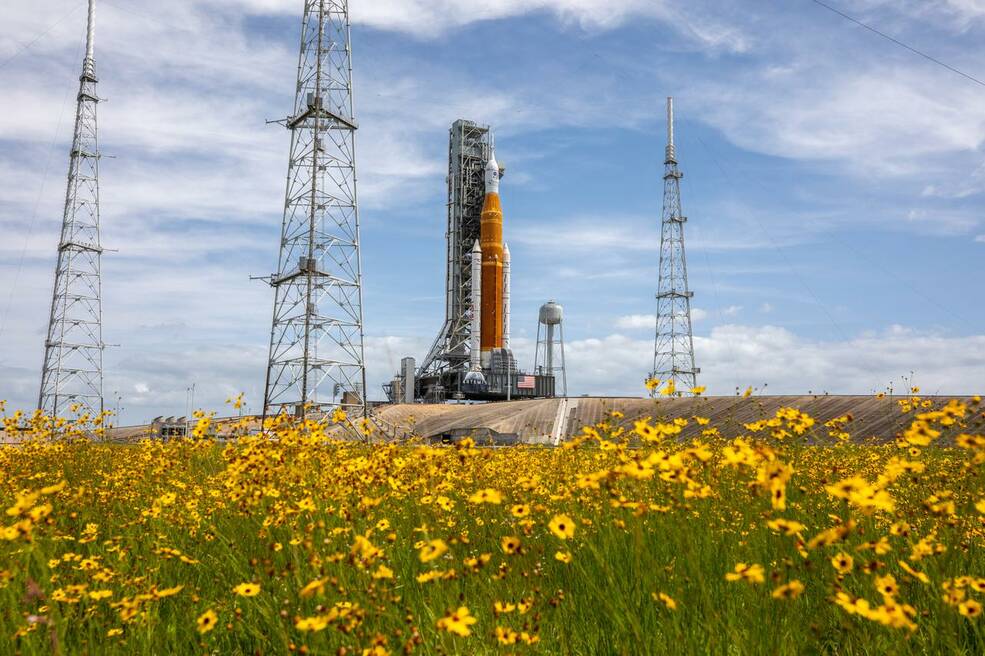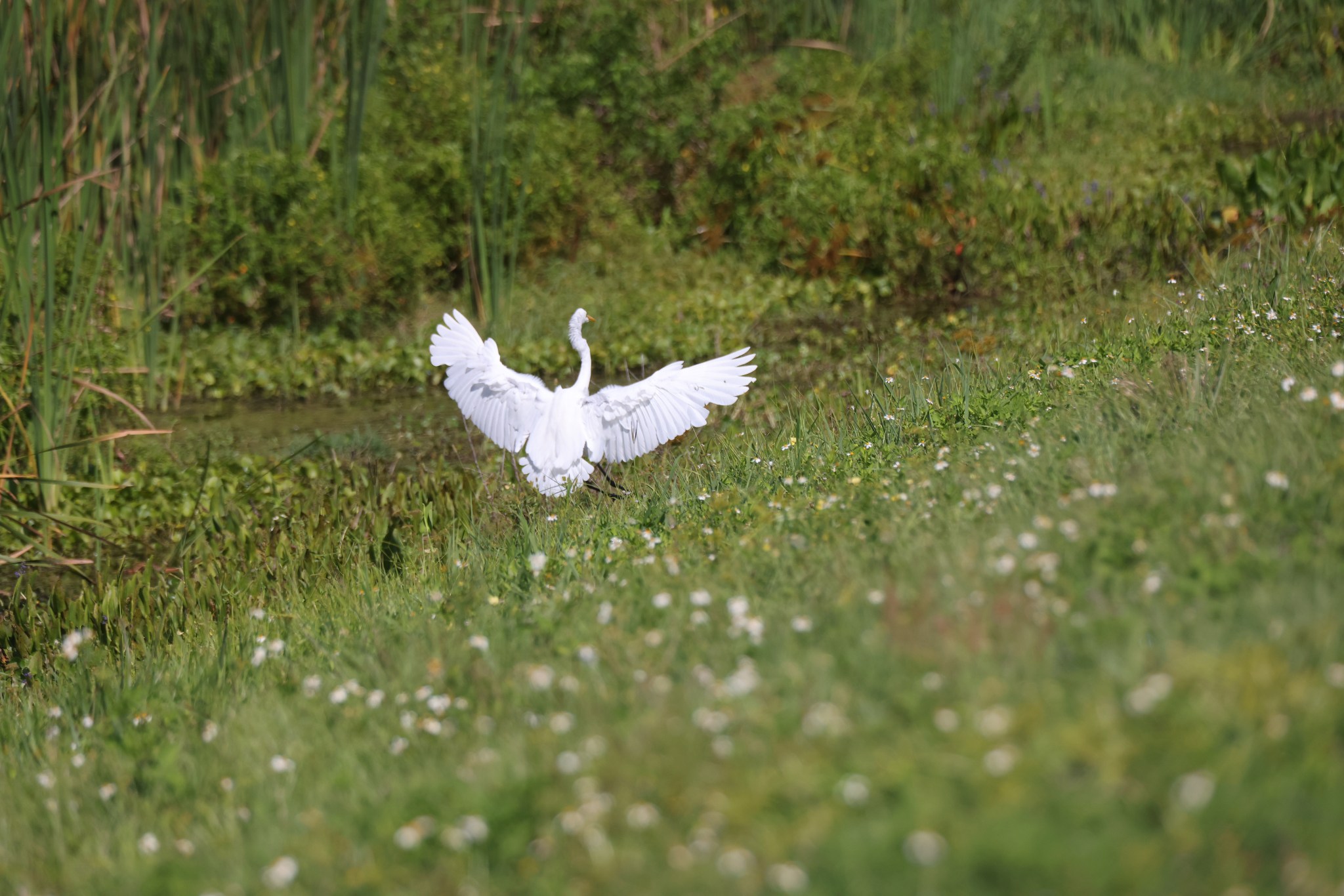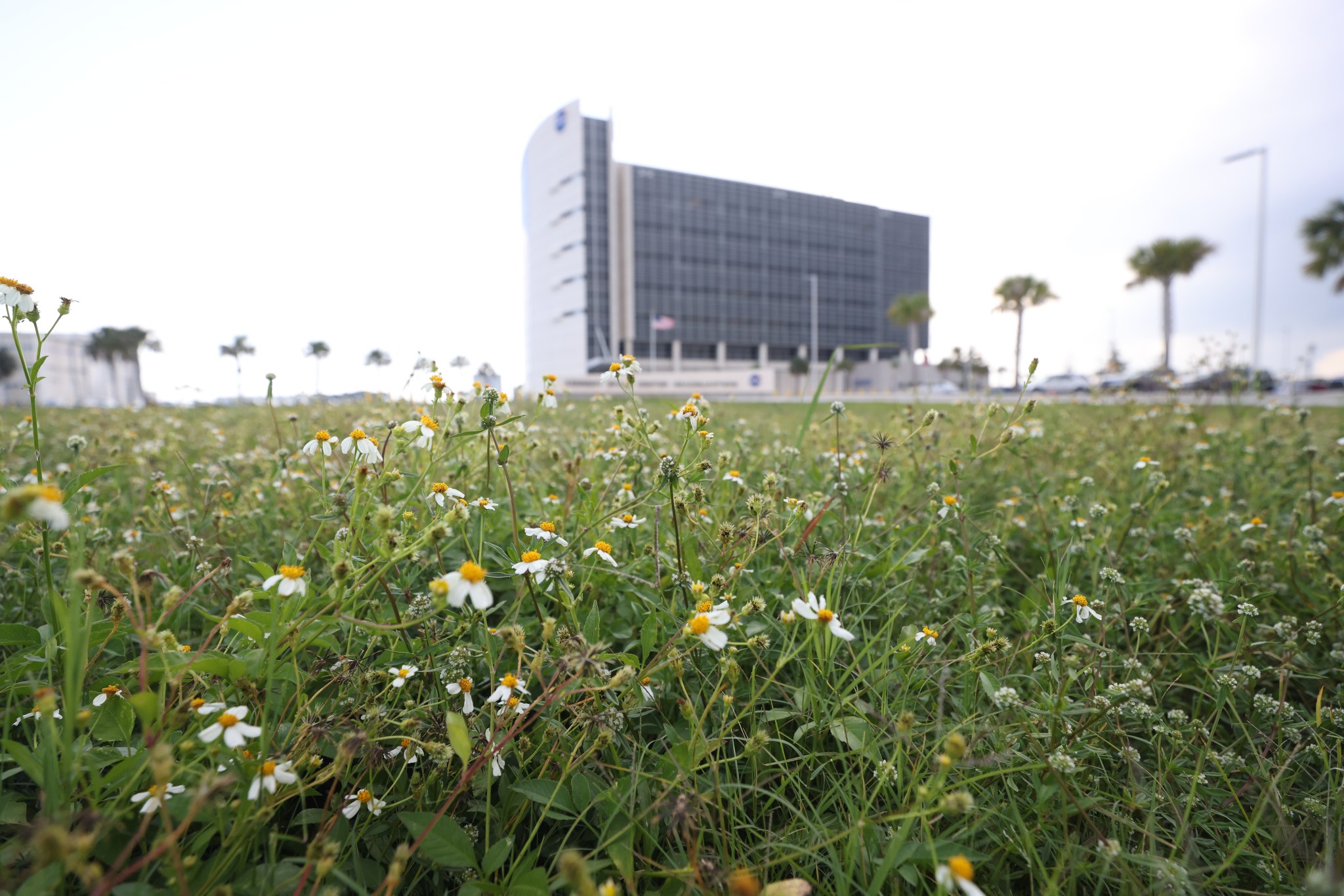
NASA’s Kennedy Space Center in Florida shares a boundary with the Merritt Island National Wildlife Refuge, where hundreds of species of wildflowers flourish and serve as a colorful backdrop for launching humanity’s future. Some are flowering plants, while others are ferns, and they all play a role in the center’s ecosystem.
Some of the more common wildflowers – morning glory, frog fruit, and dune sunflower – blanket the soil near the center’s ditches and shorelines. A yellow flower called Coreopsis, Florida’s state wildflower, is abundant near the pads at Launch Complex 39, where astronauts have slipped the bonds of Earth since the Apollo launches of the 1960s. Those flowers also bore witness to many space shuttle launches and will do so again as Artemis soars to the Moon and Mars.
“Native plants are good for the center’s ecosystem,” said Paul Schmalzer, a plant ecologist with Herndon Solutions Group on the NASA Environmental and Medical Contract at Kennedy. “Many different kinds of insects feed on and pollinate the flowers, and local animals eat the seeds or foliage of these plants.”
Some of those animals include herbivores such as raccoons, turkeys, rabbits, and deer. Bees, moths, hummingbirds, butterflies, ladybugs, hornets, and wasps are also drawn to many of the showy wildflowers around the center. Bees and other insects pollinate flowering plants by transferring pollen from one flower to another, a vital step in plant reproduction and food production.
This week, June 19-25, is National Pollinator Week, an annual celebration of pollinator health and all the ways to protect the more than 300 species of bees in Florida. This year’s focus is on the connection between climate and pollinators. The conservation of pollinators and their habitats can help combat climate change by supporting healthy ecosystems, air, soil, water, and plants.
Every now and then, Schmalzer sees new species of wildflowers pop up at the center. Wind, storms, and water help spread wildflower pollen. Birds also help spread wildflower seeds and pollen.
“Some wildflowers are recognized as threatened or endangered, primarily at the state level,” Schmalzer said. “None of those are on Kennedy property, but the endangered Indian River prickly-apple cactus does grow in areas of the Canaveral National Seashore.”
Plenty of flowering plants such as mangroves and sea grasses grow alongside the wildflowers, joined by ferns and floating plants like lily pads in Kennedy’s ponds and waterways. That vegetation combines with salt marsh and railroad vines to stabilize Kennedy’s grounds, especially in sandy areas like the recently completed dune restoration project east of Launch Complex 39.
What can we do in our own backyards? Schmalzer encourages homeowners to use native plants in their landscaping to support birds and native insects. “Help our native species to survive,” Schmalzer added.
The center’s sustainability efforts focus on protecting and enhancing the spaceport’s environment and resources for generations to come. Along with the wildflowers, Kennedy and the wildlife refuge are home to more than 300 native and migratory bird species, 197 species of fish, 71 amphibian and reptile species, 29 kinds of mammals, and more than 1,000 different types of plants.






























